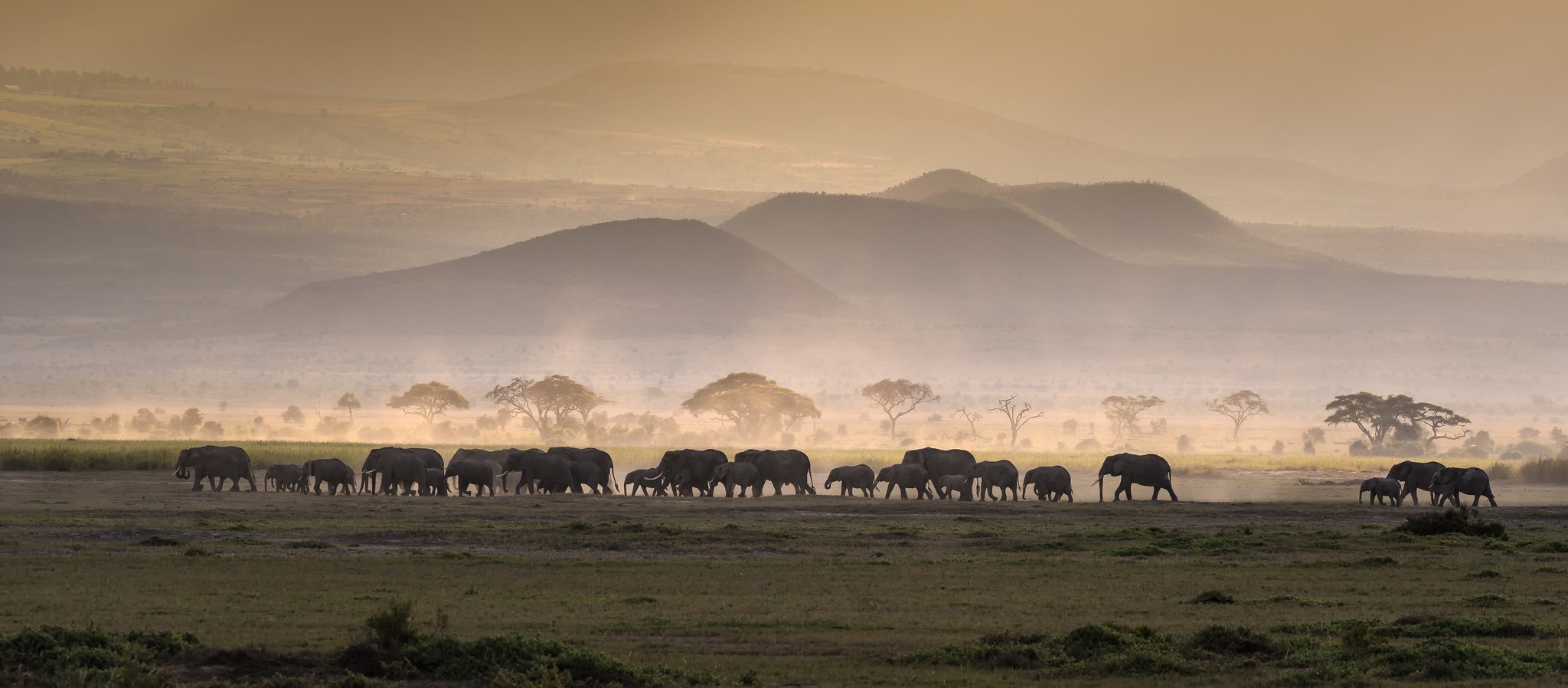If you take a course in environmental economics, you are likely to be dazzled with fancy graphs using isoquants, budget constraints, and even social welfare functions. From these fancy tools, F. Bator went so far as to determine a “bliss point,” suggesting that these tools could take society to its maximum level of well-being. I still have the book from which these graphs were taken and I can still remember distinctly sitting through this lecture and just thinking, can you believe it? I am going to learn how to take society to its bliss point!
This type of analysis illustrates the way economists often approach problems, namely using marginal analysis to maximize some value subject to opportunity cost constraints. From this analysis follows one of the main tenets of economics: if the marginal benefits are greater than the marginal cost, do it. We economists think this marginal analysis is a pretty powerful way of thinking about the world. In determining how clean the air should be, we need to know what the additional benefits of clean air are, what the additional costs of clean air are, and as long as the additional benefits exceed the additional cost then clean it up. If you want to know whether to save an endangered species, the answer is the same: If the marginal benefits exceed the marginal costs, save it.
Let us apply this to the issue of wolf reintroduction into Yellowstone National Park. In 1995, during the Clinton administration, Bruce Babbitt, then Secretary of the Interior, released a few Canadian timber wolves in Yellowstone with the idea that wolves were an important missing link in the ecosystem. If you asked an economist about whether we should do this and, if so, how many wolves should be released, the answer would depend on marginal benefits and marginal costs. If the marginal benefits of wolf reintroduction exceed the marginal costs, reintroduce them. However, nobody asked economists that question and, in fact, with most environmental issues, nobody ever asks the economists. Indeed courts have even said the laws do not allow decision makers to look at the costs and benefits. If the law says clean it up, cleanup must occur regardless of costs. The simple fact is that the notion of marginal benefits and marginal costs and hence, the notion of efficiency, is not something on which most people focus. As my colleague, Rick Stroup, put it after working at the Department of Interior, “efficiency has no constituency.”
But this does not necessarily mean that interested parties do not focus on the benefits and costs they face. Rather, the benefits and costs on which they focus depend on the hat they wear. Consider the view from under a cowboy hat. People with livestock thought that we had already reached the optimal number of wolves—zero—by putting a bounty on wolves and shooting them. From this view, why would you spend millions of dollars to undertake reintroduction?
Now consider the view from under the hunter’s hat. From here the benefits and costs are a little bit tougher to determine, because the wolf may be a potential huntable species, in which case more wolves could provide benefits to hunters, or it could be a predator on big game animals such as elk, thus shifting the wolf to the cost side of the equation. Given that the politics make it unlikely that wolves are not going to be hunted in the near future and that the rapid growth in the wolf population has taken a heavy toll on elk numbers in and around Yellowstone, it is not surprising that hunters are increasingly concluding that the marginal costs of another wolf exceed the marginal benefits.
What about the people who wear the “Smokey the Bear” hat and manage Yellowstone? How do they perceive the benefits and costs? If you know anything about budgets for parks, you know that one of the driving factors in park budgets is visitors. And with wolves being reintroduced into Yellowstone, the number of visitors, especially in the winter, has increased. Furthermore, park managers now have larger budgets for doing research on wolves. And, believing that their mission is to maintain the Yellowstone ecosystem, they believe that wolf reintroduction restored the park to “a full complement of vertebrates.” Therefore, for national park managers, the marginal benefits of wolf reintroduction are greater than the marginal costs.
Public policy regarding wolves has been acrimonious to say the least, and unfortunately such acrimony permeates environmental policy creating a gridlock at the federal level.
And how do environmentalists perceive the benefits and costs? In the same way that ranchers see the costs as virtually infinite and the benefits as trivial, environmentalists see the benefits as virtually infinite and the costs as trivial. From this perspective, wolves should be allowed to increase with the only limit on wolf numbers coming from the size of the prey populations.
Not surprisingly the views from this array of hats has generated what author Hank Fischer called “wolf wars.” Public policy regarding wolves has been acrimonious to say the least, and unfortunately such acrimony permeates environmental policy creating a gridlock at the federal level.
My purpose here is to suggest that there is an alternative to political environmentalism and that is free market environmentalism. To develop this concept, I begin by describing environmental policy since the 1970s and ask how well the political approach has worked. I then explain how and why free market environmentalism would be a better alternative.
POLITICAL ENVIRONMENTALISM
Consider some examples of how we have approached environmental policy since the early 1970s. When national forest lands were set aside in the early 1900s, the concern was that commercial logging would lead to a timber famine that could only be prevented by having public management of national forests for timber production and later some other multiple uses such as grazing and recreation. President Teddy Roosevelt got Gifford Pinchot, who knew a great deal about managing forests from his experiences in Germany, to fashion the U.S. Forest Service as an agency that would sustain timber production. For decades, there was not much controversy about how national forests should be managed. Maximum sustainable yield was the guiding principle and management was done mostly at the local level where forest rangers knew about growing conditions.
Over time, however, national forest management has gotten more controversial because there are many more voices coming from under many different hats other than those wearing hard hats and carrying chain saws. Take, for example, the issue of diseased and insect infested trees. Sustainable timber management would harvest these trees, but environmental interests would let nature take her course, letting the trees die and decay or burn.
From these latter demands came the Wilderness Act of 1964, which sailed through Congress with virtually no opposition. With no lands totally closed to commodity production and motorized vehicles, wilderness advocates called for wilderness designation of areas where people would “leave only footprints and take only pictures.” At the time the Act passed, advocates called for 20 million acres, but since then we have set aside 120 million acres as official wilderness lands, and under President Clinton’s roadless rule, added another 58 million acres that were not to be roaded.
Over time, however, national forest management has gotten more controversial because there are many more voices coming from under many different hats other than those wearing hard hats and carrying chain saws.
It should come as no surprise that further wilderness designation is controversial. For people who want commodity production, roads for access, or trails for off-road-vehicles, the marginal costs of another acre of wilderness exceed the marginal benefits, and vice versa for wilderness advocates. When a wilderness bill was introduced in the Senate calling for an additional three million acres of wilderness in Montana, the incumbent senator from Montana lost his seat in his reelection bid mainly because he supported this bill.
And wilderness designation is not the only controversial part of forest management. Controversy abounds regarding whether the Forest Service is doing its job in terms of maintaining the quality of those forests. Wildfires dominate the news each summer in many western states with residents pointing fingers at the U.S. Forest Service for mismanagement. Recreational crowding is another problem. Hunters complain of too many people hunting on public lands, campers complain of insufficient camp spaces, and hikers complain of competition from mountain bikes, horses, and off-road-vehicles.
If all the acrimony over use were not enough, the budgetary losses raise many hackles and generate calls for an end to subsidies. Most of the fiscal focus is on losses generated by commodity production. For example, between 1994 and 1996, timber production on federal lands lost approximately $290 million per year and grazing lost $66 million per year.
Such losses bring accusations of subsidies for logging companies. It is questionable whether these losses are really subsidies because they result more from the fact that expenditures by federal agencies are high rather than because prices paid for timber or grass are low. Especially in the case of logging, competitive bidding for timber means that loggers are paying what the timber is worth. The Forest Service loses money because it spends so much on processing the sales. Accusations of subsidies for grazers on public land also abound with environmentalists using subsidies as an argument for eliminating grazing on public lands. In the early years of the Clinton administration, environmentalists called for “No moo in ‘92” and “Cattle free in ’93.” Despite these calls, however, even with allies in the White House, cattle were not removed from the public domain and grazing fees generally went down, not up.
Clearly, commodity production on federal lands does lose money, but consider the biggest money loser of all, recreation. Those of us who backpack, fish, hunt, camp, and picnic are the biggest pigs at the public land trough. For the years 1994 through 1996, recreation on federal lands lost $355 million per year. Our demands for trails, roads, campgrounds, signs, rescues—and the list goes on and on— cost money. And for the most part we pay nothing for our public land use. Given that we are getting something of great value for free, this is a real subsidy.
Let me turn to another example of political environmentalism, the Endangered Species Act. When the act was passed, the bald eagle was the poster child for passage. Here was the national bird going extinct, and no one was going to ask an economist to do a benefit cost analysis of whether it was worth saving. The Endangered Species Act, like the Wilderness Act, sailed through Congress and passed with people saying we have to stop destroying species. The act specifically prohibits “taking” a species. It was clear that this meant you could not deliberately kill an endangered species, but it was not clear whether you could eliminate habitat. Suppose, for example, I cut down trees that could provide habitat for the red-cockaded woodpecker, an endangered species that lives in the southeastern United States. Suppose that you know your neighbor cut down some pine trees that had woodpeckers living in them and was fined by the U.S. Fish and Wildlife Service. Now ask yourself this question: if woodpeckers have not moved onto your property but are close by, would you cut your trees sooner to eliminate the prospect of regulation under the ESA? Researchers examined this question empirically and found that, ceteris paribus, the average harvest on properties with no red-cockaded woodpeckers in a 25 mile radius was approximately 70 years; with 25 colonies in a 25 mile radius, the average age dropped to less than 40 years; and with over 400 colonies in a 25 mile radius, the average dropped to less than 20 years.
Water provides another prime example of the problems with political environmentalism. Starting in 1902 with passage of the Reclamation Act, the national government began building dams and water delivery systems. No thought was given to impacts on free-flowing rivers and salmon populations. The purpose of the Act was to “make the desert bloom like a rose” through subsidies to irrigators. Consider the fiscal implications of these subsidies. After the federal government had spent a good deal of money building dams in the Uinta mountains of Utah, but had not completed the delivery system for the Central Utah Project, Orrin Hatch, the senator from Utah,asked the Senate to appropriate funds to complete the Project. Bill Bradley, the senator from New Jersey, called for the Congressional Budget Office to do a benefit-cost analysis. The CBO found that the marginal cost of delivering an acre foot of water (one foot of water covering one acre of land or approximately 325,000 gallons) to the farmers was about $300. When that water was put on the crops, mostly alfalfa, it was going to be worth less than $30 in added output. The farmers, however, would pay less than eight dollars for that water that would be worth $30 to them. Despite this analysis, the project went forward. This is not about efficiency; it is about politics. In fact, if you look at all the big federal projects in the West, you will be hard pressed to find one that passes benefit-cost muster and this does not include environmental costs.
Turning to pollution issues, Congress was quick to pass the Clean Air Act and the Clean Water Act in the early 1970s. Those acts cleared Congress with images of burning rivers and children not able to play outside. To be sure, air and water quality have improved, but no consideration is given to costs and benefits. And in some cases, environmental quality may have gotten worse.
Take the case of the Clean Air Act amendments of 1977. These amendments required that coal-fired power plants install scrubbers on their smokestacks to reduce sulfur emissions. Bruce Ackerman and W.T. Hasler have explained that we could have had cleaner air by burning low sulfur western coal, but that eastern coal interests lobbied for scrubbers that were more costly and more polluting. Once scrubbers were required, dirtier eastern coal, which was cheaper, became the preferred fuel. The air is dirtier and electricity is more expensive thanks to political environmentalism.
FREE MARKET ENVIRONMENTALISM
The alternative I propose is free market environmentalism. For the most part, markets have been seen as the cause of environmental problems, not the solution. But free market environmentalism can be summarized in two points. The first, and the one that I think is increasingly understood, is that wealth makes a difference to environmentalism. Those of us with full stomachs, good clothes to wear, transportation, housing, medical care, education, and so on demand and get a cleaner environment. As Aaron Wildavsky, the late political scientist from Berkeley, liked to put it, “wealthier is healthier.” The second point is quite simply, incentives matter. Or as a Montana rancher puts it, “if it pays, it stays.”
Data increasingly support the first point. Economists have estimated the correlation between income and environmental quality and have consistently found that, although there may be an initial degradation of the environment as economic growth occurs, environmental quality eventually increases with income. For many environmental measures, the turning point is between a GDP of $4000 and $8000 per capita. For others, such as wilderness designation or net-carbon reductions, the turning point is much higher, but it still occurs. In his book, The Skeptical Environmentalist, Bjørn Lomborg plots GDP per capita by country against an index of environmental indicators. His data again support the point that rich countries such as the United States, Canada, or Japan have much cleaner environments than countries such as Ethiopia or Zimbabwe. Couple these data with the fact that market-based economies with property rights and a rule of law are more likely to have economic growth, and the case for free market environmentalism begins to take shape.
The second point is supported by numerous case studies. For example, in the East and the South, private landowners manage for land values other than just timber, and they do so at a profit. The International Paper Company’s wildlife and recreation program is a prime example. International Paper employs specialists to oversee wildlife and recreation on its lands, including the 16,000-acre Southlands Experiment Forest located near Bainbridge, Georgia. At Southlands, researchers develop forest management practices that enhance wildlife populations as well as profits. White-tailed deer, turkeys, rabbits, bobwhite quail, mourning dove, and other species are beginning to reap the benefits of these new management techniques. Habitat is improved by controlled burning, buffer zones along streams, and tree-cutting practices that leave wildlife cover and plenty of forage.
According to company officials, investing in wildlife research and habitat production makes sounds business sense. On its 1.2-million- acre mid-South region, which includes parts of Texas, Louisiana, and Arkansas, profits from hunting, hiking, fishing, and camping are an impressive 25 percent of total profits. By far the biggest revenue generator is the multiyear hunting lease. In early 1994, approximately 2,100 clubs paid from $2 to $5 per acre to lease company land for hunting. Between 1977 and 1998, recreational revenue rose from $300,000 to $5.5 million.
These returns from hunting leases paid dividends for wildlife as well as for the company. Populations of deer, turkey, fox, quail, and duck are up substantially since the program began. In addition, company biologists carry out an assortment of projects to help non-game species, from putting up bluebird boxes to protecting heron rookeries. Even though non-game species have no explicit market, hunters, campers, anglers, and hikers are willing to pay more for a diversified experience.
Return to the wolf example for more free market environmentalism at work. The growing list of entrepreneurial pragmatists in the environmental movement includes Hank Fischer, the former Northern Rockies director of Defenders of Wildlife. Having fought in the “wolf wars,” Hank searched for a better alternative and came up with an insurance-like strategy to protect both wolves and ranchers. Wolves are viewed by ranchers in the same way that environmentalists view pollution; wolves reintroduced into Yellowstone National Park spill out of its borders and harm ranchers when they kill an occasional cow or sheep. To deal with this pollution problem, Defenders of Wildlife established its privately funded wolf compensation fund and offered to pay the ranchers for livestock losses due to wolf predation. Between its inception in 1987 and April 2000, the fund paid compensation totaling $109,476.77 to 111 ranchers in the area surrounding Yellowstone National Park, central Idaho, and northwestern Montana.
Clearly this insurance-type scheme is not perfect because it does not pay the rancher for the time spent proving that the animal was killed by wolves or for the cost of actually purchasing a replacement animal. According to Margaret Soulen Hinson, a sheep rancher in Idaho who was paid from the fund for sheep lost to wolves, “[w]e would rather have no losses than compensation.”
But given the highly emotional climate surrounding wolf reintroduction, imperfection is not surprising. And because ranchers’ historic means of excluding wolves was to kill them, a system that compensates for the conflicting use of habitat—ranchers wanting land for grazing and environmentalists wanting it for wolves—moves wolf policy in the direction of negotiated settlements. Even Margaret Hinson recognizes that “it does make you more tolerant to participate in this program.”
To further improve the program, Defenders of Wildlife established another fund to reward ranchers for allowing wolves to live on their private property. Hank Fischer recognized that the compensation program, at best, made ranchers neutral toward wolves; that is to say, with compensation, ranchers are not being asked to bear the full cost. By offering a reward to any rancher who has a wolf raise a litter of pups on private property, Defenders is trying to change the incentives. In the spring of 1994, a rancher near Augusta, Montana, collected a $5,000 reward from Defenders for having three wolf pups successfully raised on his property. The rancher told his cowboys to leave the wolves alone following advice from state and federal biologists about how to minimize human disturbance. By offering a reward to a rancher who allows the raising of wolves on his land, Defenders may be able to turn the liability of providing a public good into an asset.
To illustrate how free market environmentalism can work for pollution, consider the Tar-Pamlico area of North Carolina. In 1983, a serious fish kill occurred in Tar Pamlico Sound as a result of oxygen depletion caused by nutrients, mainly phosphates and nitrates. This happened despite the fact that The U.S. Environmental Protection Agency (EPA) and state authorities had set water quality discharge standards. All of the 26 regulated dischargers were in compliance with the standards. To improve water quality in the sound through tighter standards for point dischargers, the EPA estimated the cost to be from $860 to $7,861. The cost of reaching the nutrient goal by having farmers reduce their effluent ranged from $67 to $119 per pound. To move in the direction of lowering the costs, the Tar-Pamlico River Basin Association was formed in 1989. Recognizing that command and control was likely to make dischargers face the higher cost estimate, they suggested that its members help defray the cost to farmers of reducing their discharge. By doing it this way, instead of spending as much as $100 million to protect water quality, the cost was only around $10 million.
If we wish to continue to improve the environment, ultimately we are going to have to turn the environment into an asset; make it something that people, who are the stewards, are rewarded for producing.
My final example is the CAMPFIRE program (the Communal Areas Management Programme for Indigenous Resources) in southern Africa. Entrepreneurs who understand the problems of wildlife management in southern Africa are working with the local communities and national governments to change the incentives faced by indigenous people on the communal lands. Between 60 and 80 percent of Africa’s people live in rural areas, and the overwhelming majority of them barely scrape by with subsistence farming and ranching. The lands they use are communally owned, and the soils are often poor for growing crops or forage for cattle. These same lands that are marginal for agriculture, however, can provide excellent wildlife habitat. The problem is that sustainable wildlife populations have not meant sustainable human populations.
CAMPFIRE is an entrepreneurial approach to rural development based on the principle that the benefits from wildlife must go to those who pay the financial and social costs of coexisting with wild animals. The CAMPFIRE concept devolves the responsibility of managing wildlife to local communities that can profit from it.
The Nyaminyami District Council, with a human population of 35,000 and communal lands totaling 363,000 hectares, offers a prime example of how CAMPFIRE can work. In 1989, its inaugural years, Nyaminyami’s CAMPFIRE project generated $108,800 from safari hunting and another $18,800 from culling to keep local wildlife populations under control. With the major capital costs of $80,773 covered by funds donated by conservation groups, the district had $6,400 to distribute among the twelve separate communities after paying operating and administrative costs and allocating 12 percent for capital investment and reserves. If these amounts seem small, realize that the average income per household was less than $100 per year in 1989.
Another early CAMPFIRE success came in the Beitbridge District. However, unlike Nyaminyami, the Beitbridge project was financed completely by the returns from wildlife. Recognizing that different communities within the district made more sacrifices to provide wildlife habitat, the Beitbridge Council distributed wildlife profits unequally to communities within the district, giving more to those communities that produced more higher-value animals. In 1990, the Beitbridge District CAMPFIRE project generated approximately $20,000 from hunting. Of that amount, the community of Chikwarakwara received 87 percent of the total, because it was the top wildlife producer. Two other neighboring communities received much smaller amounts because of lower animal numbers. National parks also paid the Beitbridge District Council $18,400 for revenues accrued from past safari hunting, and from this amount, Chikwarakwara received another $8,000. Free to determine how to use their proceeds, the people of Chikwarakwara decided to pay each of the 149 households in the community $80 as a wildlife dividend. The remainder of the earnings went toward building a school and purchasing a corn-grinding mill. Though the $80 dividend may not seem like a lot to a wealthy westerner, it almost doubled the average annual cash income for each family.
CONCLUSION
These examples are not the result of environmentalists suddenly discovering the wisdom of Adam Smith in The Wealth of Nations, but are simply a matter of pragmatic people who probably do not know anything about economics, who probably do not know a lot about law, but who do know that, if you can get the incentives right, you are more likely to save some of the things that you want. Aldo Leopold, the author of the Sand County Almanac, clearly understood the importance of incentives when he said “Conservation will ultimately boil down to rewarding the private landowner who conserves the public interest.”
This is not to say that there is no role for government and regulation. Regulations have helped improve the environment in some cases, but for the most part we have picked the low fruit from the tree. With the high fruit, i.e., high cost, left, we must find alternatives. If we wish to continue to improve the environment, ultimately we are going to have to turn the environment into an asset; make it something that people, who are the stewards, are rewarded for producing. As Leigh Perkins, owner of the Orvis Company and long-time conservationist, said in his biography, “[a]s we move into this next century, the environmental movement will have to rely more and more on market solutions if we wish to conserve our precious natural resources.” If we can do this, we can get more stewardship and environmental improvements with less acrimony.
This article was adapted from the Case Western Reserve Law Review, Vol. 55:1 Fall 2004. Read the complete article as a PDF.









